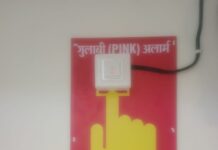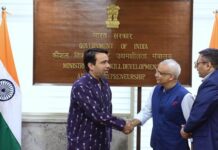At least 168 people died and hundreds more injured when a tsunami apparently triggered by an erupting Mount Krakatoa hit beaches around Sunda Strait in Indonesia on Saturday night.
The waves were apparently triggered by a combination of underwater landslides caused by the eruption of Mount Krakatoa and an abnormal tidal surge due to a new moon, Sutopo Purwo Nugroho, the national disaster agency spokesman, said.
He said dozens of buildings were destroyed by the wave, which hit beaches in South Sumatra and the western tip of Java about 9.30 pm local time on Saturday.
The volcano Anak Krakatoa – meaning “Child of Krakatoa” – which is thought to have triggered the deadly tsunami has been particularly active since June, occasionally sending massive plumes of ash high into the sky and in October a tour boat was nearly hit by lava bombs from the erupting volcano.
The volcanic island emerged in 1928 out of the caldera of Krakatoa, the volcano that famously exploded in 1883 in one of the most violent volcanic eruptions in history, spewing ash 12km into the air and killing more than 30,000 people.
Anak Krakatoa has been continually active since it emerged, with eruptions once every two to three years. It is uninhabited but a popular tourist destination.
The worst affected area was the Pandeglang region of Banten province in Java, which encompasses the Ujung Kulon National Park and popular beaches, the disaster agency said. Of the deaths, 33 were in Pandeglang.
In the city of Bandar Lampung on southern Sumatra, hundreds of residents took refuge at the governor’s office.
Alif, a resident in Pandeglang district, said the tsunami reached about three
Michel Rooijackers, who is an adviser to Save the Children’s local partner in Indonesia said early reports showed major damage in areas hit by the tsunami, although it was still too early to know the full extent of the devastation.
He added: Our teams are working closely with local authorities and other aid agencies to gain a clearer picture of the needs and what humanitarian response is required. We’re particularly concerned about the safety and wellbeing of children, who are especially vulnerable in tsunamis and being swept away in floodwaters.

Indonesia, after the area was hit by a tsunami that may have been caused by the Anak Krakatoa volcano.








